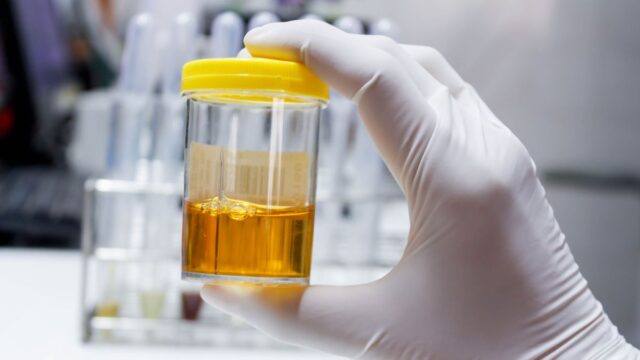The colour of the urine can change due to hydration levels in the body or it might be due to pigments in food that you consume, or the medication you are on. However, it’s important to understand that certain changes in the urine colour may indicate a health condition that needs medical attention. Generally, yellow-coloured urine is considered normal, but there is a range of urine shades that indicate certain health conditions which can be medical or lifestyle related.
The Channel 46 collaborated with Dr Prakash Sankapal, Consultant-Urologist, Fortis Hiranandani Hospital, to discuss about the range of urine colours and what they indicate about your health.
1. Pale Yellow Colour
Normal urine colour is clear to pale yellow, which indicates that your body is well hydrated. However, drinking too much water can impact the electrolytes level in the body. If your urine is clear, it may also indicate that you need to cut down on the water consumption. Stop drinking water until you’re thirsty again and your pee returns to a normal, light yellow.
2. Deep Yellow Colour
If the urine colour is deep yellow, it indicates that you are dehydrated and that you should increase fluid intake. Dark yellow coloured urine is common in the morning after your sleep, as 7-8 hours has passed since your last drink of water. However, if it happens in the daytime also, then your body needs to be hydrated. The ideal intake should be 3 litres/day (minimum 10-12 glasses of water per day).
3. Red Colour
This colour urine can trigger a panic situation for you, but it can be due to several reasons. Urine may look red or pink due the intake of fruits like beetroot, blueberries, or rhubarb that naturally contain magenta or deep pink pigments. However, in some cases it can also be due to medical conditions such as stones in the urinary tract system (kidney/ ureter/ bladder), Urinary Tract Infection (UTI), or tumour in the kidney or bladder. Also, use of certain medications which contain laxatives and Phenazopyridine (Pyridium) can turn the urine colour to pink or red.
4. Orange Colour
Usually orange colour in urine can indicate mild dehydration and one might need to increase the intake of fluid. The medical reason can be issues in the liver or bile duct. Orange urine with pale stools or yellow eyes and skin, could be a sign of a liver issue. Anti-inflammatory drugs or creation drugs with laxatives, or chemotherapy drugs might also change the urine colour to orange.
5. Brown Colour
Brown colour can be due to severe dehydration. It may also indicate several medical conditions like blood in the urine, kidney disease, liver disease, or an infection which may need immediate medical intervention.
6. Blue/Green Colour
Usually blue colour urine is a rare scenario and most likely caused due to something in the diet. Green urine may also indicate a rare genetic condition or Urinary Tract Infection (UTI). It can also be due to drugs like anti-depressants or those containing Phenol.
7. Cloudy/Milky Colour
Cloudy urine can indicate an UTI. In some cases, it may represent kidney or chronic diseases. However, cloudy urine can also be a sign of being dehydrated.
The range of urine can be from clear to cloudy, brown, blue, green or red. A temporary change in the shade of urine due to dehydration, some food items that you eat, or side effects of certain medications you’re taking is normal. In case of different urine shades, it should resume to its typical colour within 2 to 3 days after noticing an unusual colour. However, if the colour does not change to normal after a certain time, you should consult a medical expert and rule out potentially concerning causes.
Open up like never before and participate in conversations about beauty, entrepreneurship, mental health, menstrual & sexual health, and more. Desi women, join our community NOW!


